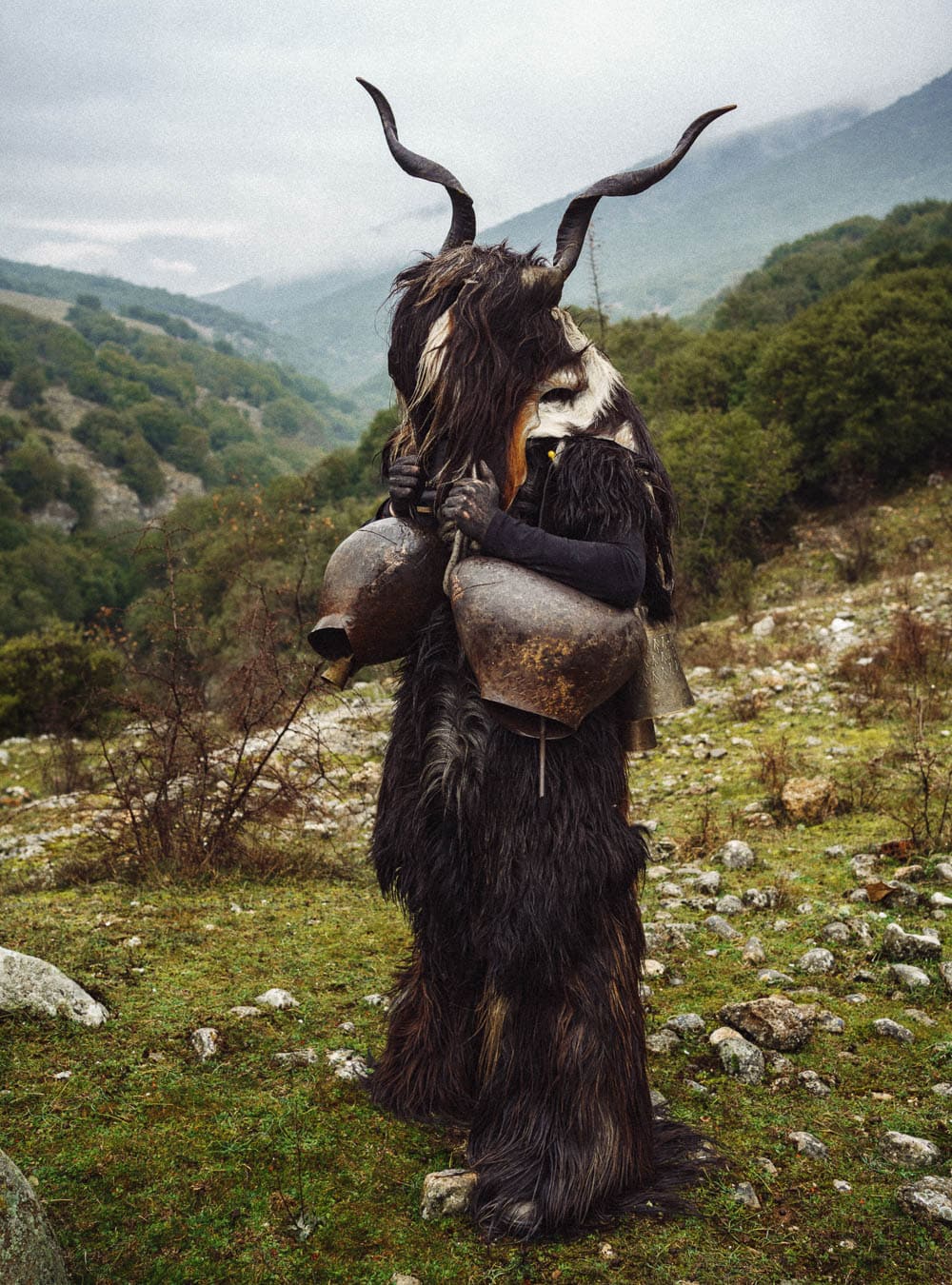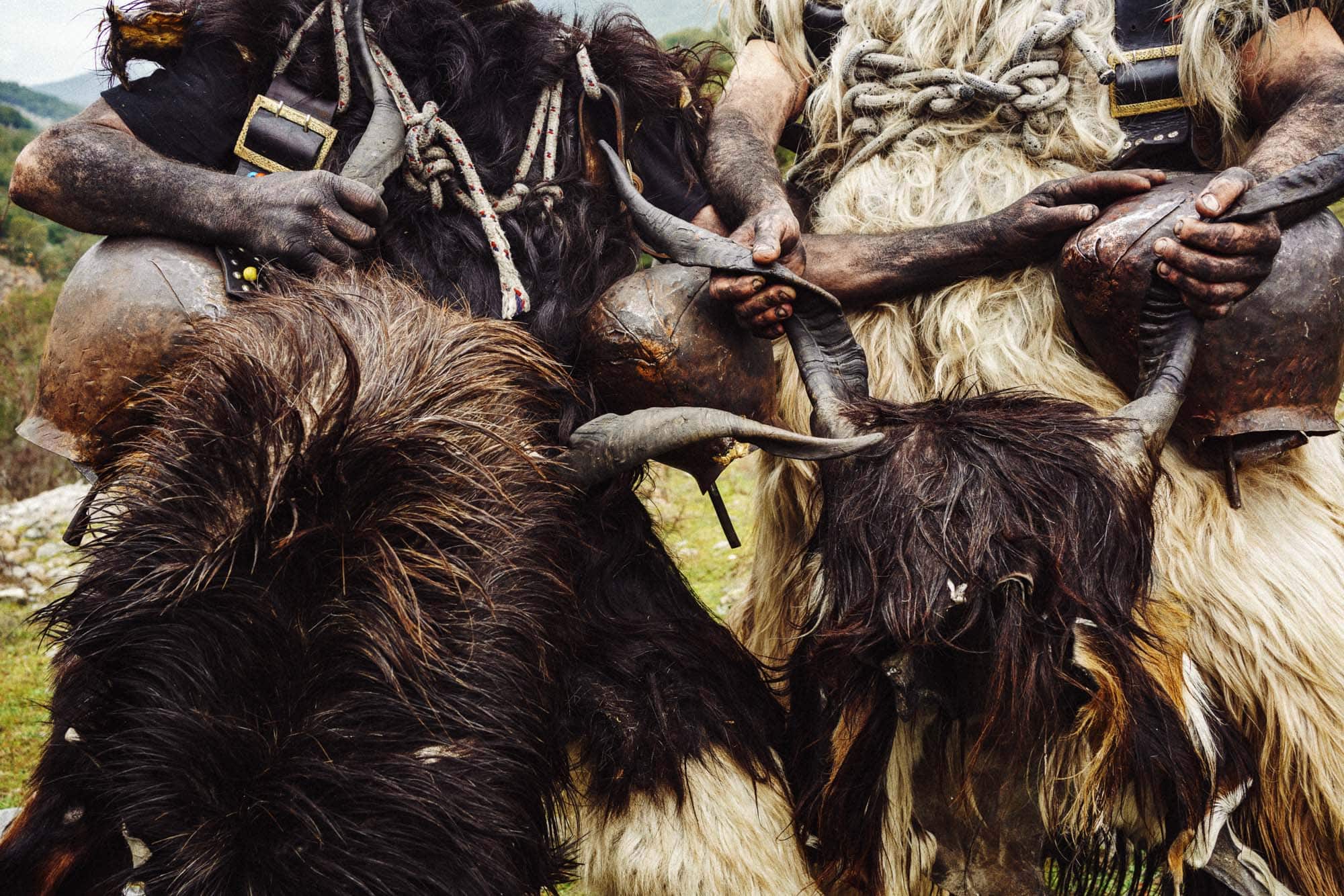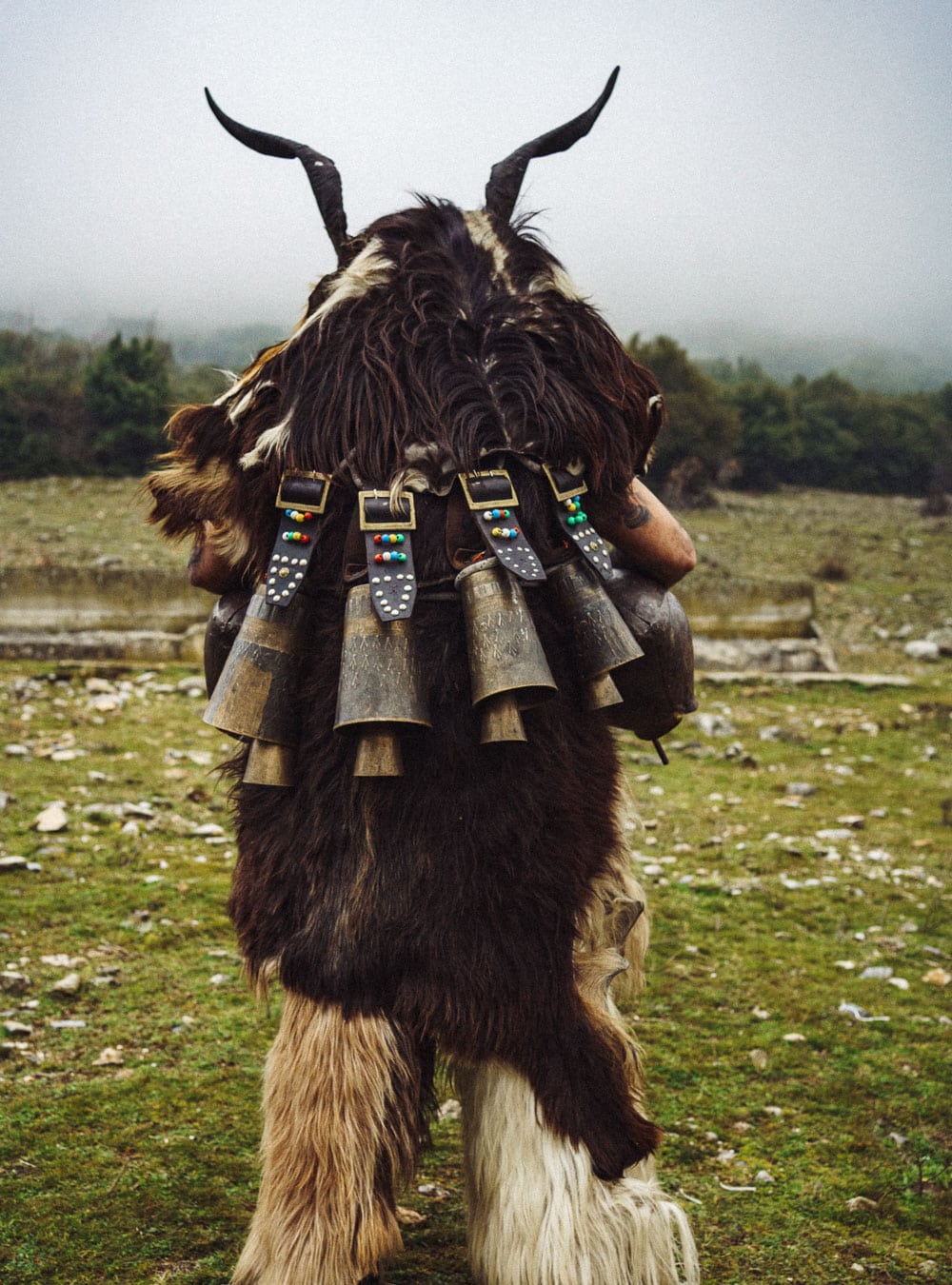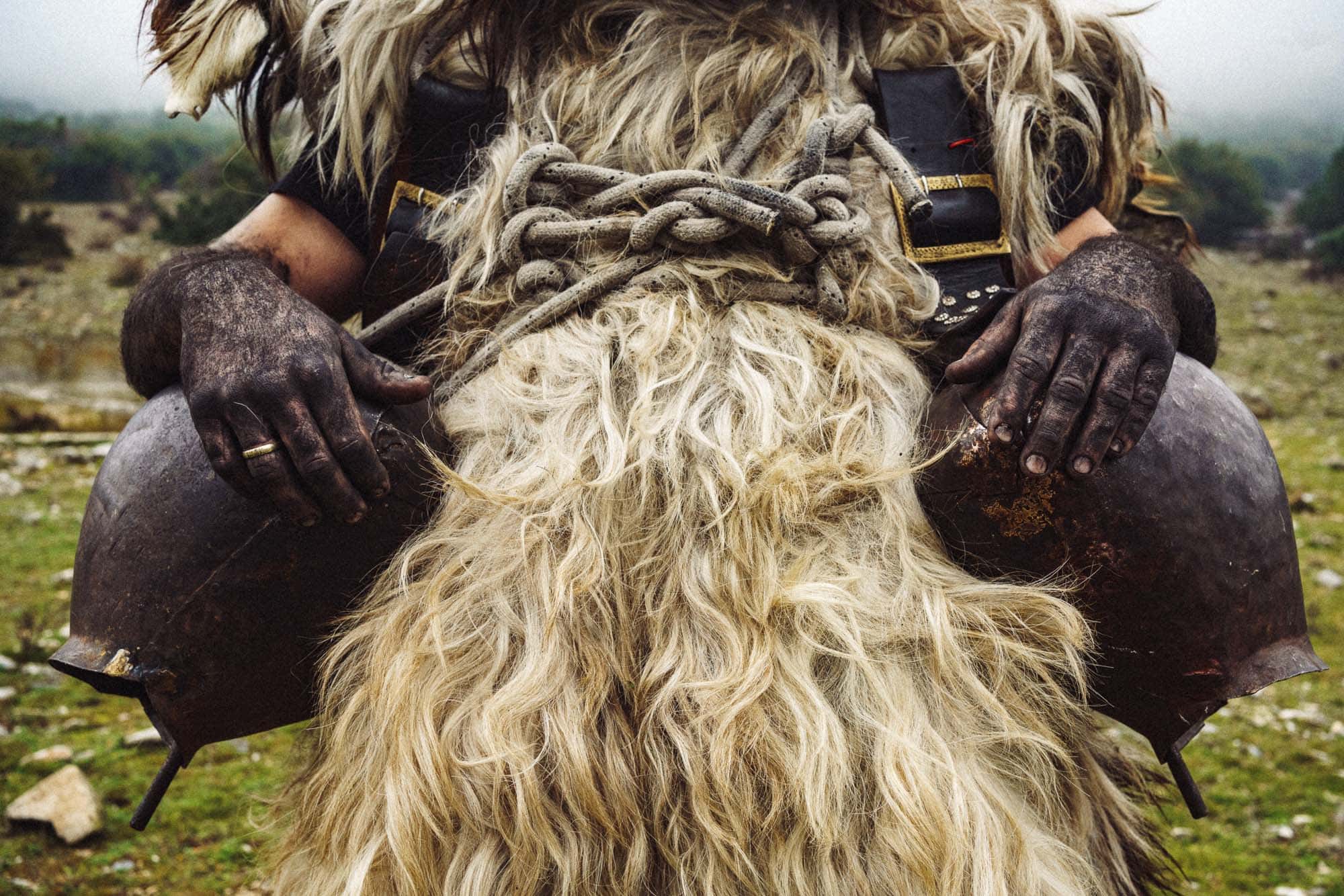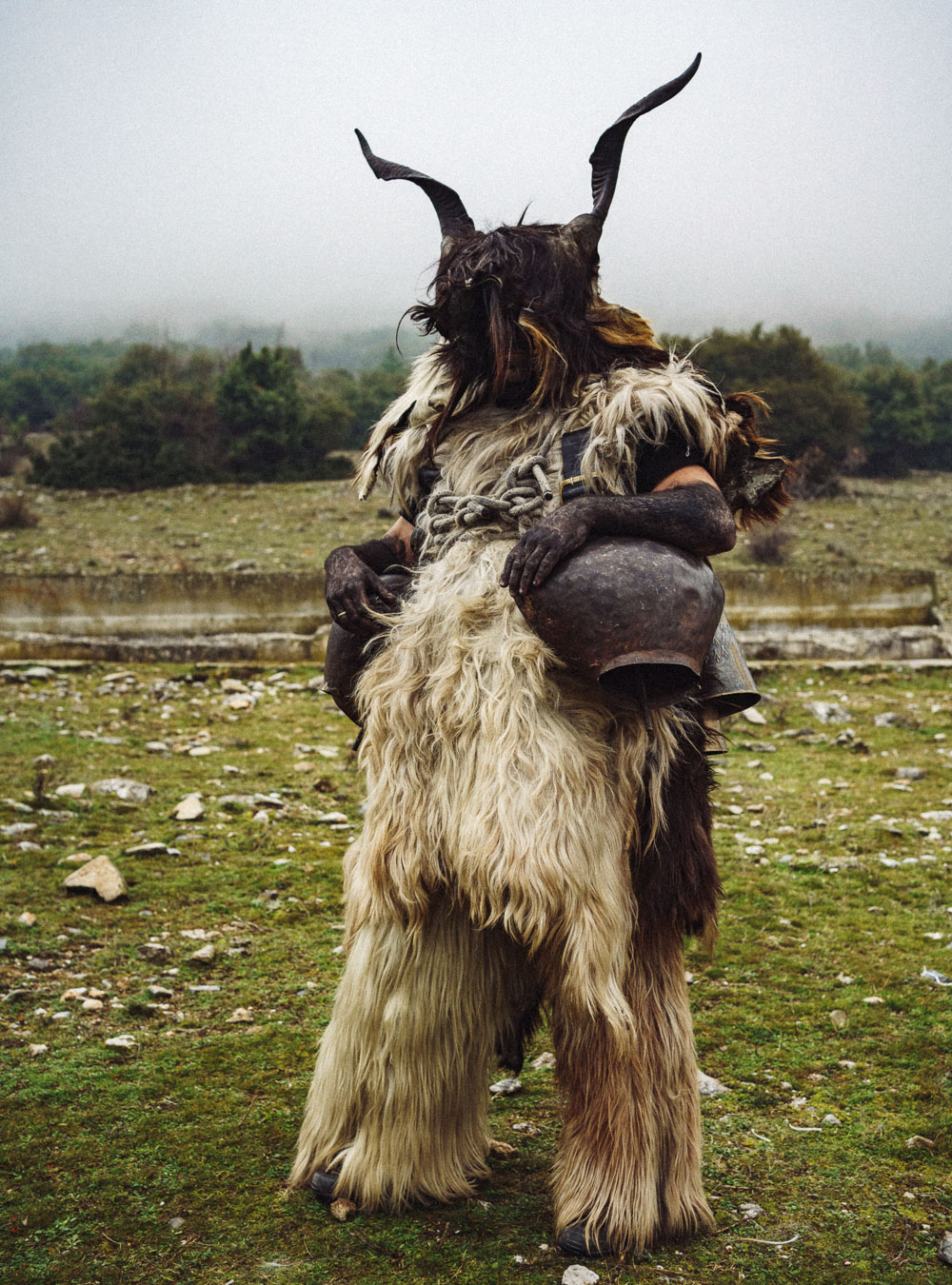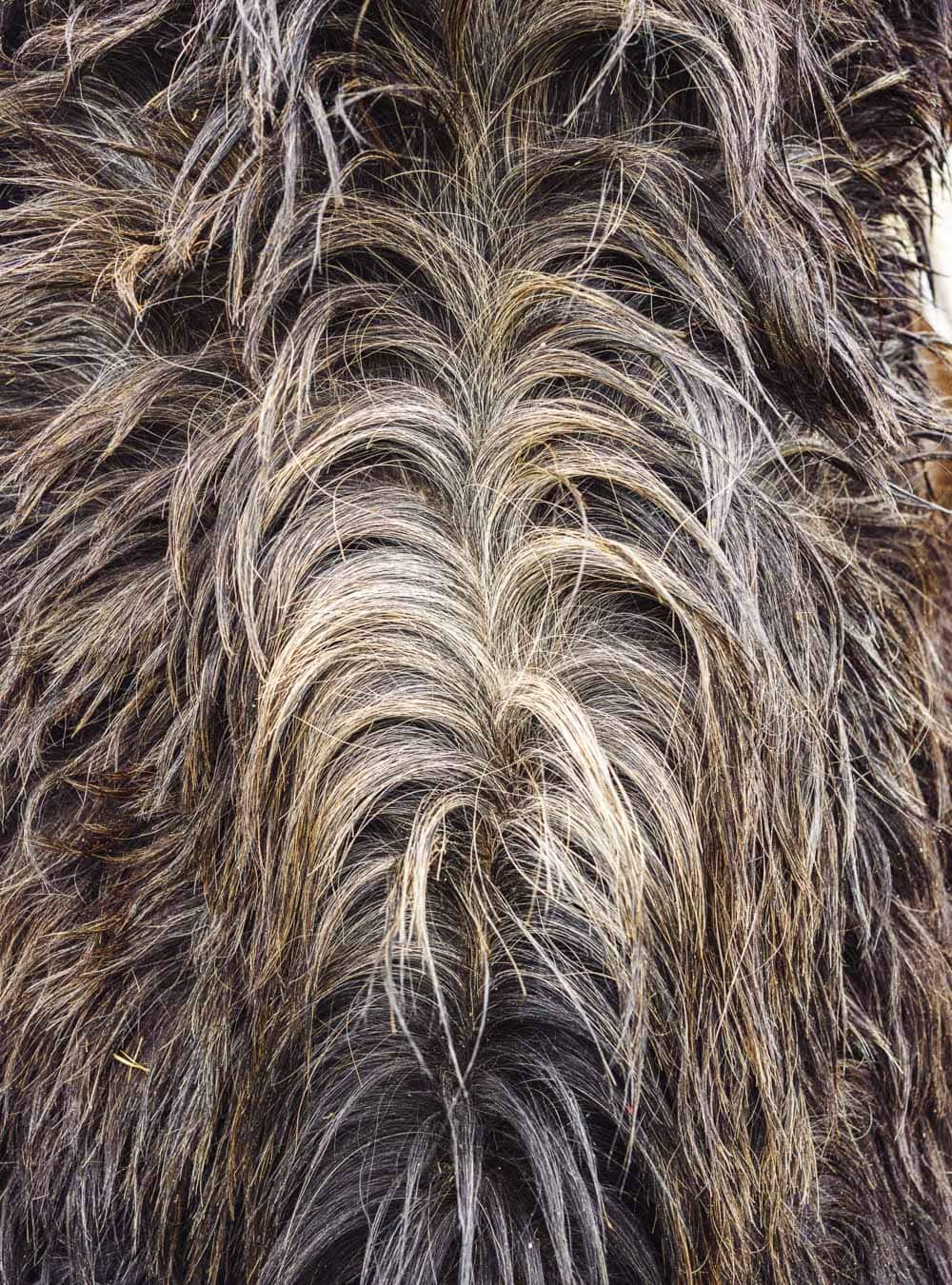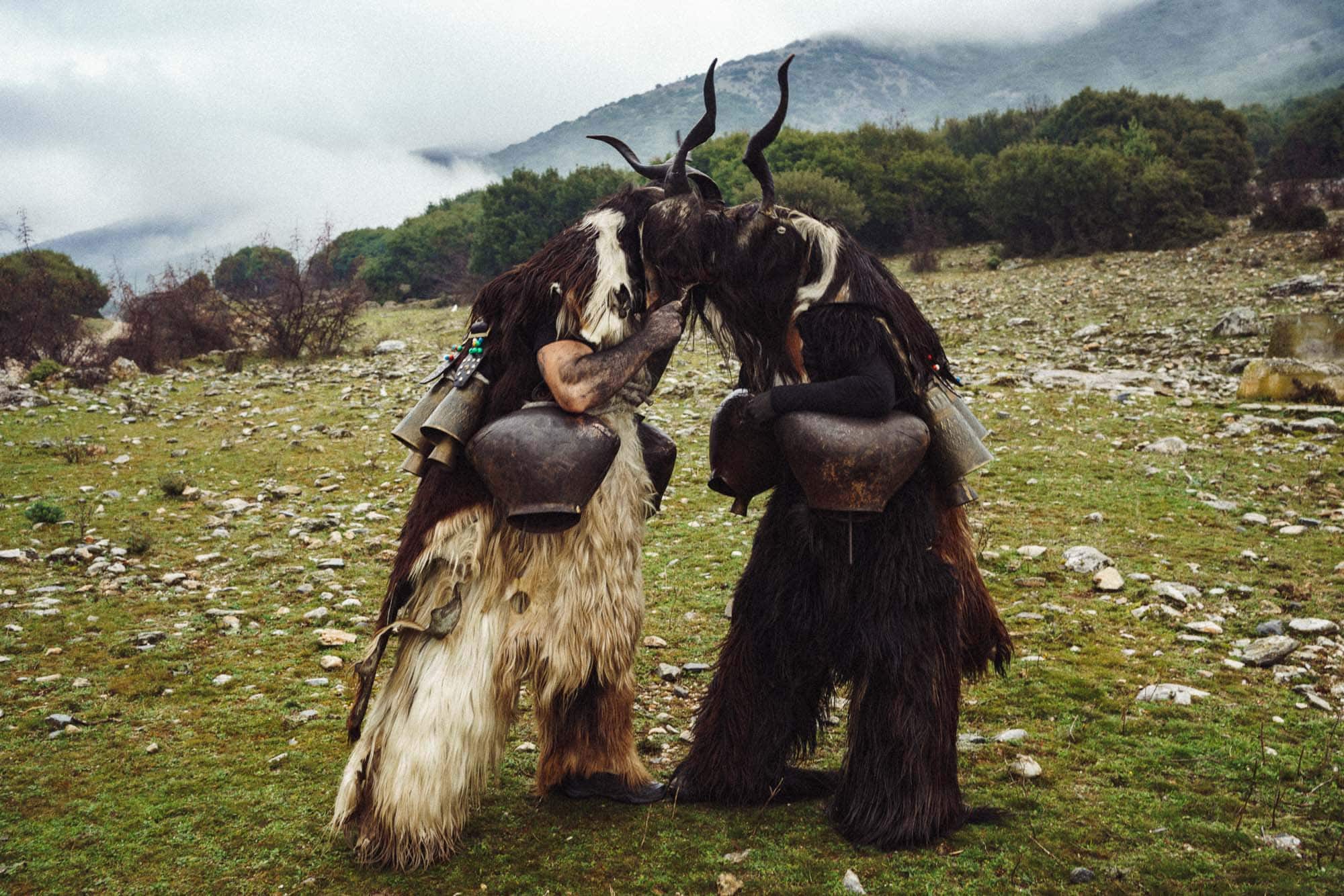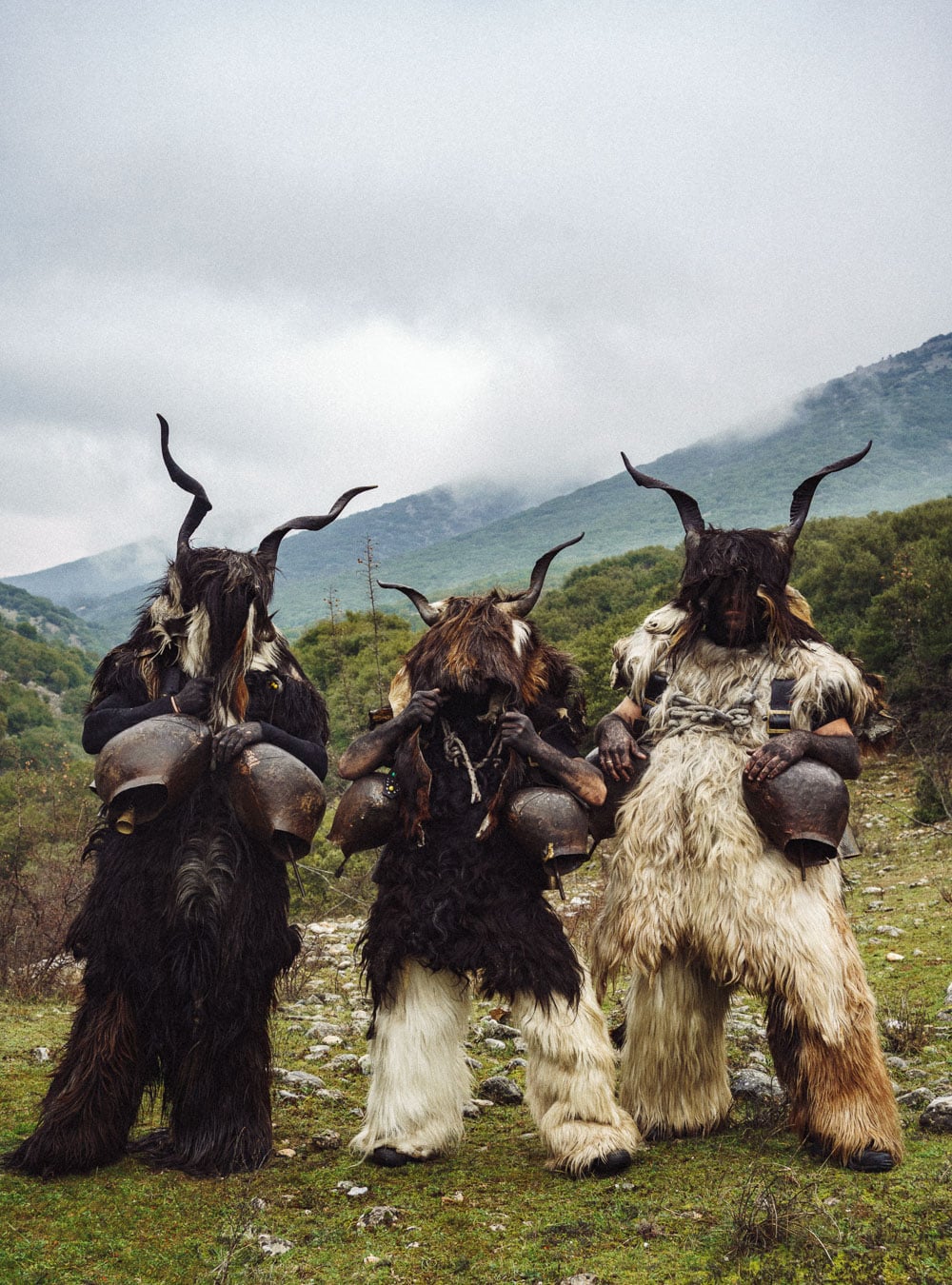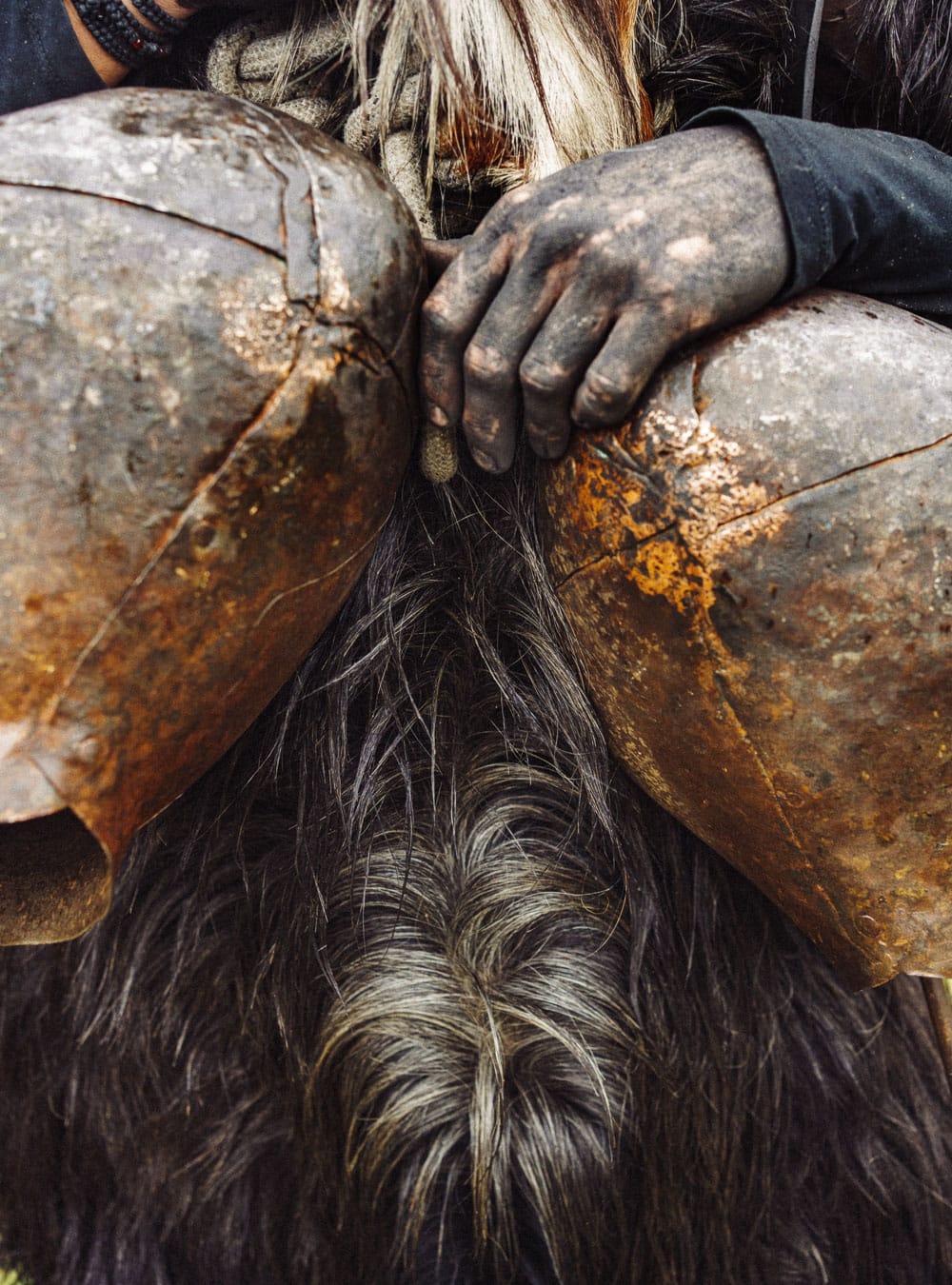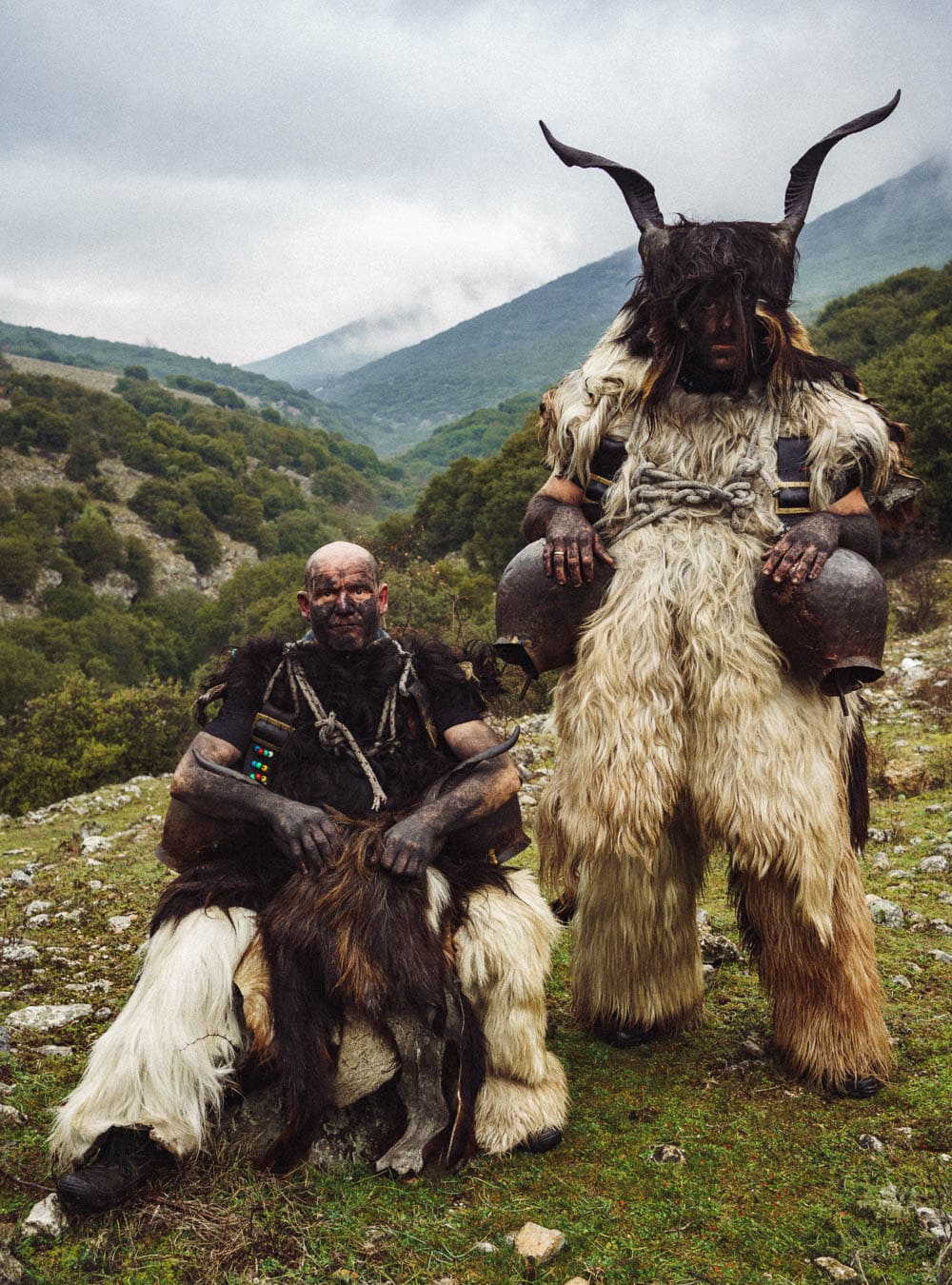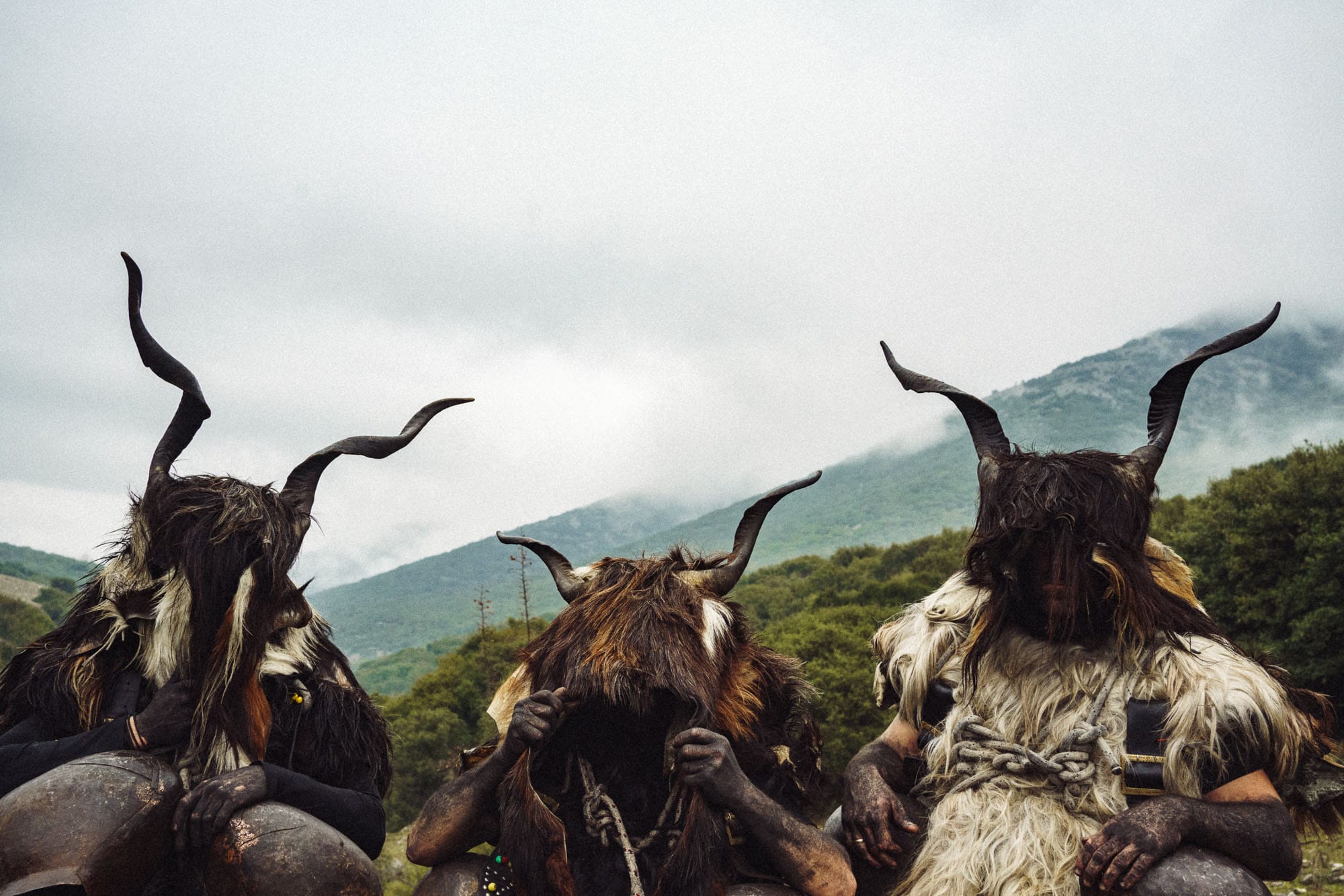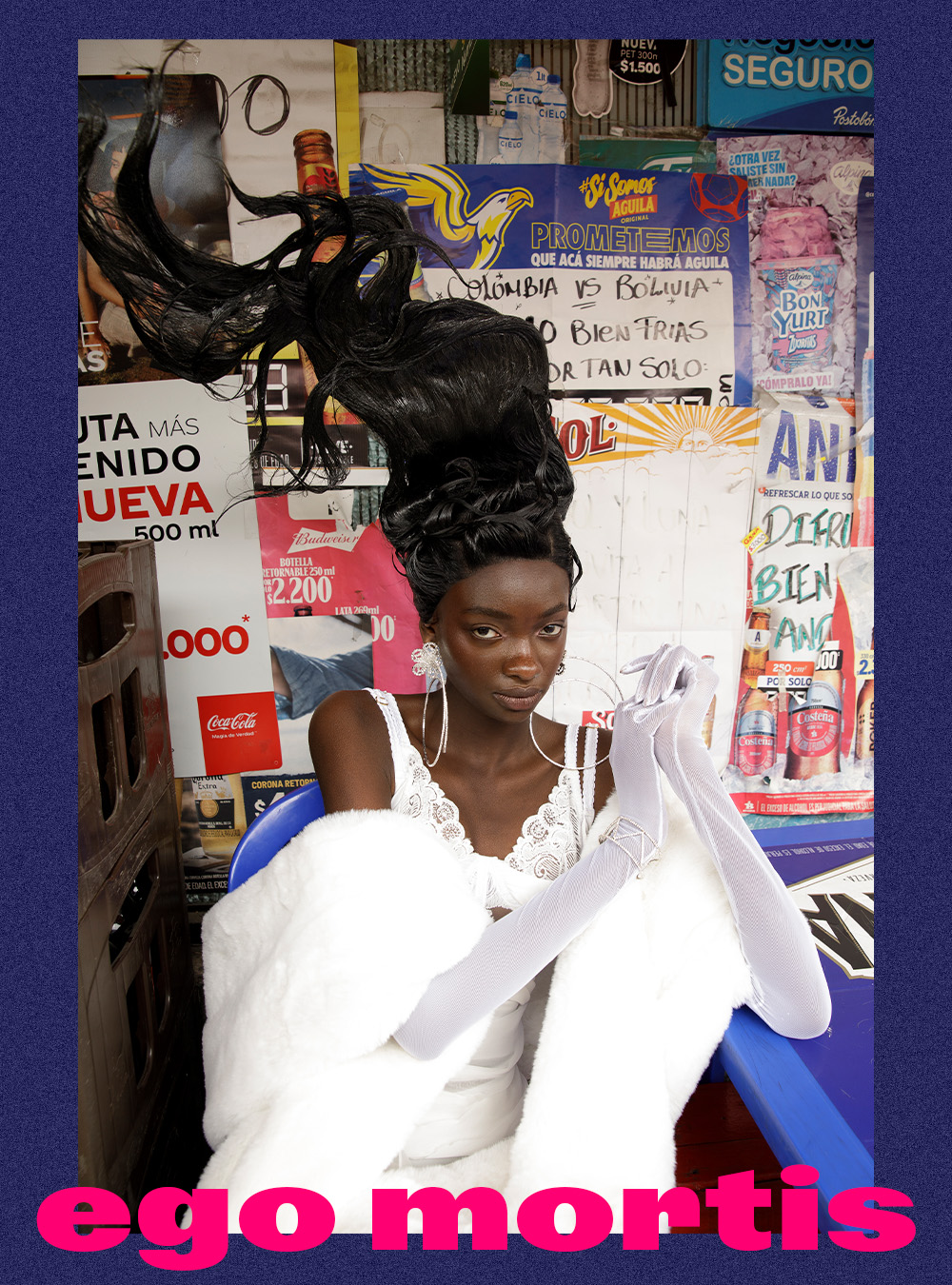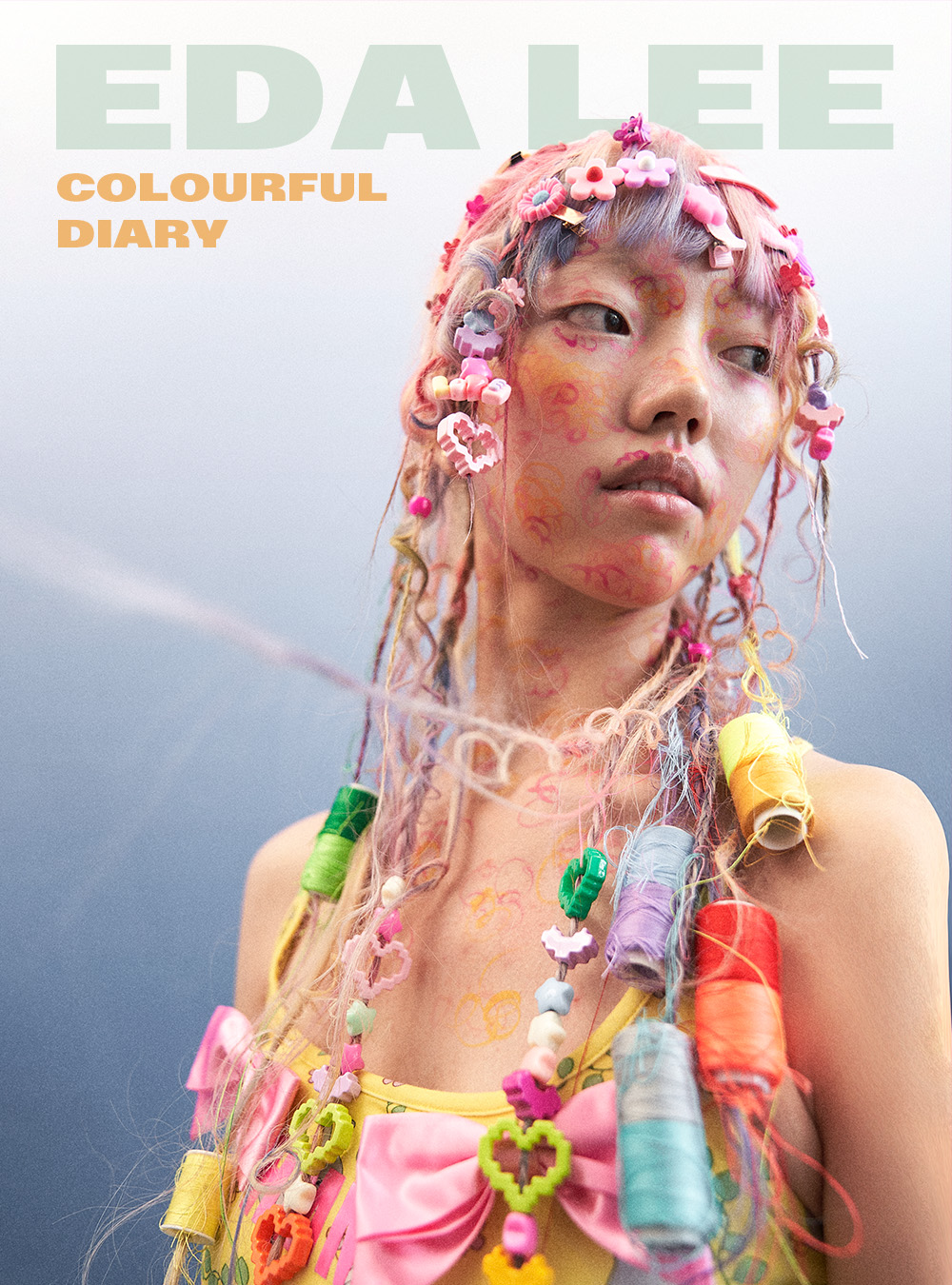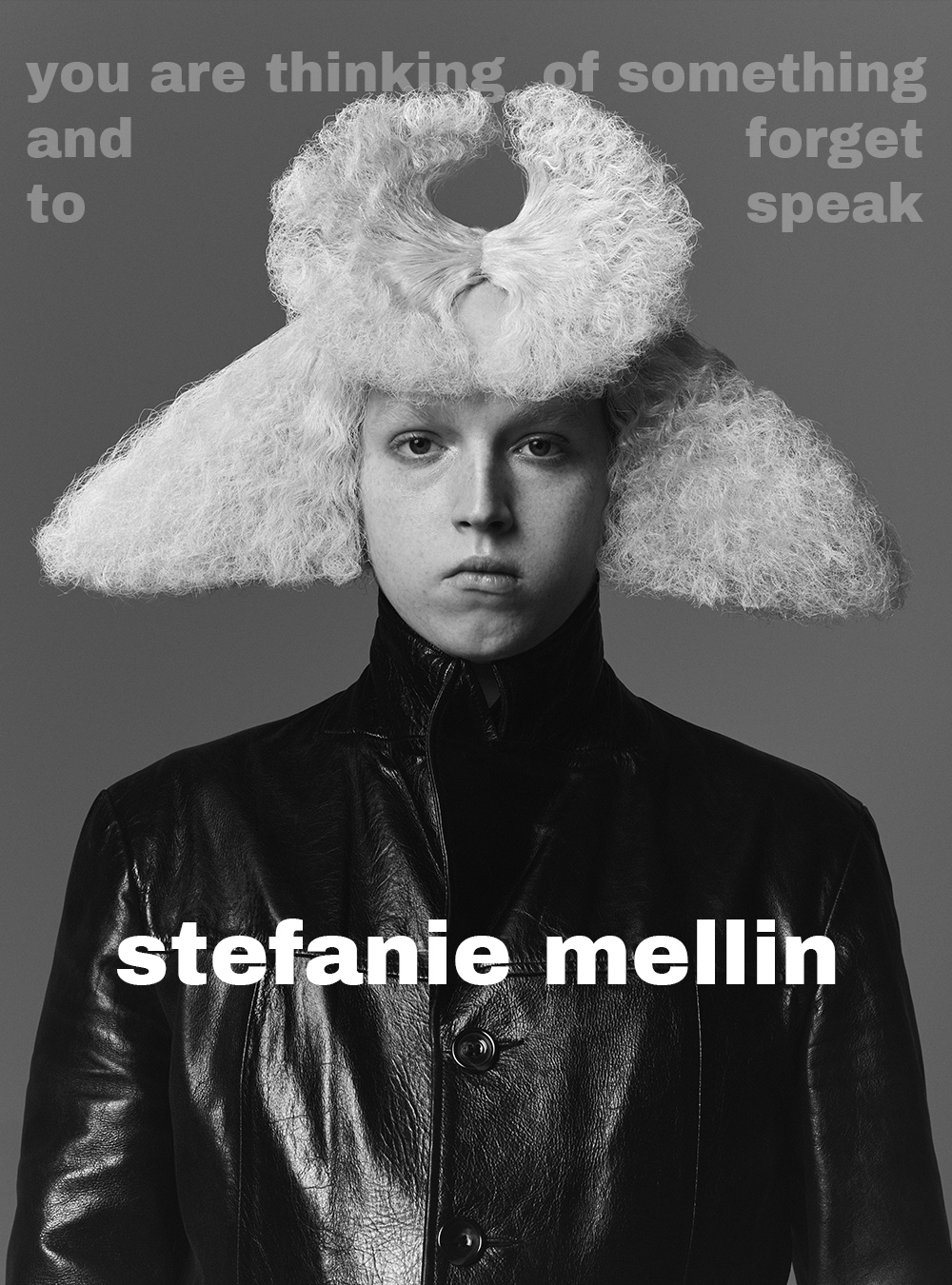ART + CULTURE: During this pagan feast in northern Greece, the battle is on to liberate the earth from the bonds of winter. It’s primal stuff.
Photography + Film: Aris Akritidis
Special Thanks: Cultural Association of Petrousa Dramas, Aggelos Papathanasiou, Nikos Dovrikis, Andreas Zlatis, Athanasios Valtsianis, Dimitris Gkountoglou, + Aggelos Tsernios
The folk event of Babiden, in the Greek village of Petrousa, takes place in early January around the Epiphany, a Christian feast celebrating the baptism of Jesus. But its roots go further back, into the mythological past. Babiden represents rebirth and the word comes from ‘babo’, meaning ‘midwife.’ In this ‘fight for life’, participants wear elaborate costumes made from goat hair and horns, referencing the pastoral traditions of this region. The menacing appearance and the sound of the bells that are integral to the costume ‘frighten evil and awaken the good’. “Babiden is the most sacred thing we have,” says Aggelos Papathanasiou. “We look forward to this rebirth, for a better year to come, a fertile year: for us, for our fields, for our animals. Everyone in the village takes part. In this way, the tradition continues.”
“A bell-carrier leads the procession. This status is transferred from father to son. Each family has their own bells and costumes which are handmade and passed down as heirlooms. The bells are made up of four smaller bells which hang from decorated leather straps and two large, forged bells. They are worn in a certain order to create a harmony – it’s like a dance.” – Nikos Dovrikis
- ANTHROPOLOGY OF HAIR
- ANTHROPOLOGY OF HAIR
- ANTHROPOLOGY OF HAIR
- ANTHROPOLOGY OF HAIR
- ANTHROPOLOGY OF HAIR
